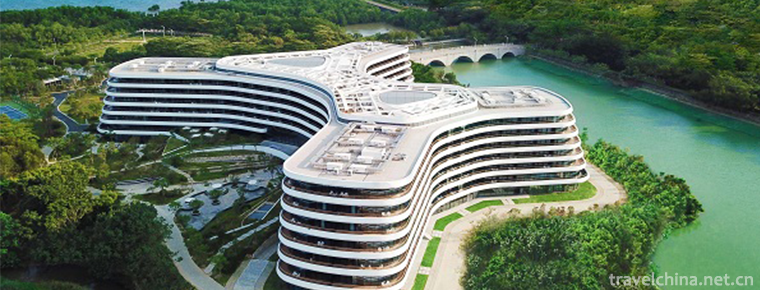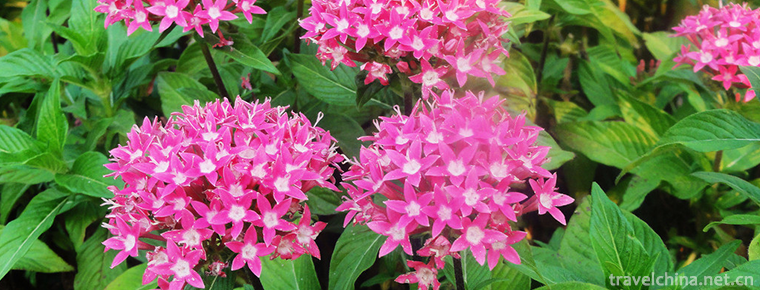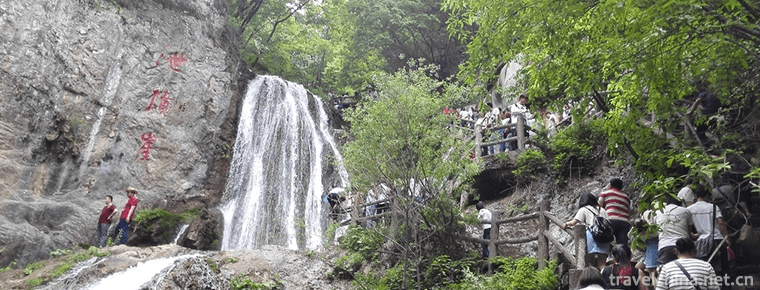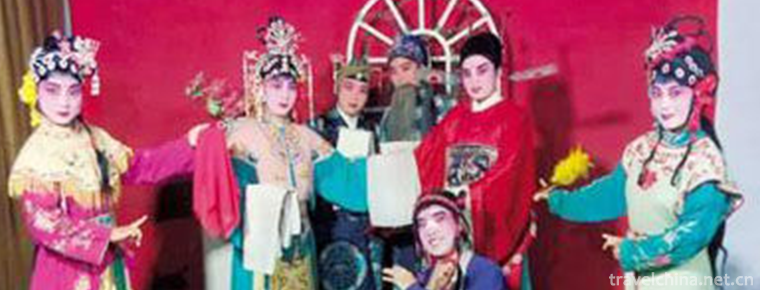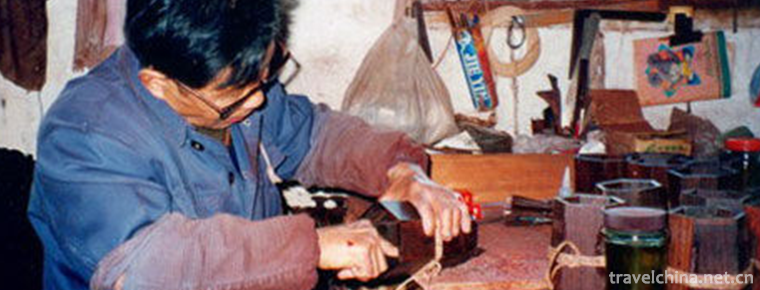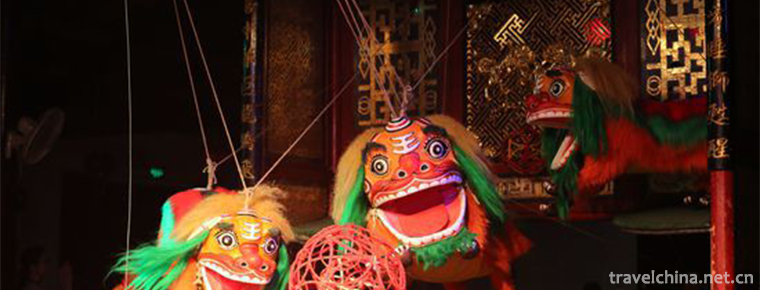Hejian song poem
Hejian song poem
Hejian Song and Poetry, Hejian City, Hebei Province, local traditional folk literature, one of the national intangible cultural heritage.
Hejian Song Poetry is an outstanding representative of Hebei Folk Oral Literature since the Han Dynasty, and an important part of contemporary "Book of Songs" culture. Hejian Song Poetry is popular in Hejian City. It is located in the hinterland of Jizhong Plain in the south-central part of Hebei Province. It is named for its location between Hutuo River and Zhongbao River (another name is Jiuhe River). Hejian Songs and Poems are accompanied by Erhu, Guzheng and other musical instruments for self-entertainment.
On May 20, 2006, Hejian Song Poetry was approved by the State Council of the People's Republic of China to be included in the first batch of national intangible cultural heritage catalogues, the heritage number: I-21.
historical origin
The style of the Fifteen Kingdoms in the Book of Songs is one of the classical representatives of oral literature in the pre-Qin period. Many of the first biographies of Poetry were lost, but only Mao Poetry was handed down from Lu, Qi and Han. Mao's poems were handed down from Mao Heng and Uncle and Nephew Mao Qian in the world. Their birthplace is Hejian City, Hebei Province. Qin Shihuang burned books to pit Confucianism, and many classics were burned. Mao Heng, a disciple of Xunzi, came to Wuyuan County (now Hejian City) of Hejian State to live in seclusion. On the basis of sorting out the classic Book of Songs, he began to compose the Exegetical Biography of the Book of Songs. While the Book of Songs was spreading, there were songs in Hejian. "Hejian Song Poetry" originated in the Han Dynasty, and was familiar with each other through the ages. There are also folk songs such as Guanyong and Polygonum in the Book of Songs sung in ancient rhymes.
Hejian's songs and poems are the earliest original work of Chinese literature, The Book of Songs, which is the oral legacy of the ancient customs of China 2,500 years ago. Poems and lyrics can generally be composed and sung. Every time in Hejian history, Qingming, Chongyang, folk temple fairs and official ceremonies have the habit of singing. Therefore, some lines and tunes of popular Hejian operas and local operas are influenced to a certain extent by Hejian songs and poems, such as Xihe Drum, which originated from Hejian. According to the analysis, the tunes of Hejian songs and poems are very similar. In the Book of Songs, a small number of poems are called "Sheng Poems". They are accompanied by Sheng in singing. There are 73 classes of Sheng Ban in Hejian. Although they have evolved into funerals, sacrificial accompaniment or self-entertainment since 1990, according to folklore, they are derived from Hejian Song Poems. Some ancient scores of Sheng Ban may be the music score of Hejian Song Poems.
Cultural characteristics
primary coverage
The name of Hejian Song Poetry is because every poem in the Book of Songs was popular at that time, especially the "wind" part was all folk songs, most of the content can be intonated completely. According to the records in Jiajing Hejian Fuzhi, the bibliographic catalogues of "Han Ancient Song", "Tang Ancient Song", "Song Ancient Song" and "Yuan Ancient Song" can roughly reflect the origin of "Hejian Song Poetry", which can prove that "Hejian Song Poetry" is a carrier of the cultural singing form of "The Book of Songs".
Cultural expression
The main manifestations of Hejian's poetry culture are as follows:
1. The appearance and spread of song poems.
2. In the process of the dissemination of the Book of Songs, the legends of historical figures and some village names have been derived, forming a place name culture.
3. The Mao Gong Academy built in the Yuan Dynasty has trained many talents, leaving behind the poems, prose, odes, couplets and inscriptions of the past dynasties related to the Book of Songs.
4. A long tradition of loving, writing and researching poetry and a strong cultural atmosphere have been formed in the locality, and poet groups have emerged.
artistic characteristics
Singing
The mouth, voice, gesture, movement and expression of the chanters of Hejian songs and poems can vary from person to person and can be improved and created. Hejian's songs and poems are not easy to say a word in the Book of Songs, which is still being sung orally. They can only remain the same. The lyrics and tunes should strictly follow the traditional style.
Accompaniment
The instruments accompanied by Hejian songs and poems can be arranged to enrich the performance of some national instruments. Sheng is the main accompaniment instrument of song poems, which sets off the rhythm of singing and embodies the singing style of song poems. Sheng should be maintained as the main musical instrument in accordance with ancient law.
Clothing
The costumes for the performance of Hejian songs and poems can increase the appreciation and attraction of the performance according to the themes of the poems, ancient poems and modern poems.
Composing music
The composing of temple song works newly created by Hejian Song Poetry can adapt to contemporary people's aesthetic and psychological innovations in tune, absorb local opera, opera, folk songs and other vocal components, and properly increase modern music elements.
Singing way
Hejian's songs and poems are the earliest original work of Chinese literature, The Book of Songs, which is the oral legacy of the ancient customs of China 2,500 years ago. Poems and lyrics can generally be composed and sung. Every time in Hejian history, Qingming, Chongyang, folk temple fairs and official ceremonies have the habit of singing. Therefore, some lines and tunes of popular Hejian operas and local operas are influenced to a certain extent by Hejian songs and poems, such as Xihe Drum, which originated from Hejian. According to the analysis, the tunes of Hejian songs and poems are very similar.
Inheritance and protection
Inheritance value
Hejian Song Poetry is an outstanding representative of folk oral literature since the Han Dynasty. Hejian Poetry Village and other villages have retained the "living" culture of chanting the Book of Songs. Hejian Song Poetry is an ancient comprehensive artistic form which integrates folk literature and music. It is the unique carrier of the Book of Songs which has been inherited orally among the people for thousands of years. It is also an important part of the contemporary culture of the Book of Songs. It has important reference value for the study of literature, history, phonology, folklore and so on.
The Book of Songs of Hejian is the artistic carrier of the history of Zhou Dynasty. Songs and poems contain abundant cultural connotations such as folk culture and official culture of the Zhou Dynasty, which can not be replaced by other historical materials. The poems contain a lot of natural and agricultural and animal husbandry scientific information such as astronomy, geography, animals and plants in the Zhou Dynasty. Due to the influence of Hejian's songs and poems, there are many poets in Hejian's past dynasties. A certain number of poetry collections and poetry collections have appeared in history, such as Mao's Commentary on Poems in the Northern Qi Dynasty and Liu Changqing's Collection in the Tang Dynasty.
Inheritance status
Hejian is not only the birthplace of Mao Shi, but also the place where the culture of the Book of Songs is taught and studied. Generations of scholars of the Book of Songs have made indelible contributions to the cultural development of the Book of Songs. From the Han Dynasty "Ancient Songs" to the Ming Dynasty, Qiu Bengu has been singing "Hejian Songs and Poems" with a clear line of inheritance. But nowadays, the inheritors are too old to survive, and they need to be rescued and protected urgently.
With the development of society, great changes have taken place in the original singing groups and the dependent environment of songs. In addition, the performance style of soothing songs and humming songs is not easy for young people to appreciate and accept. Some people who master the material and can sing the Book of Songs in ancient rhymes are old and difficult to inherit. Therefore, it is urgent to rescue and dig out and record the scores of songs and poems. Mao Gong Academy, Mao Gong Temple and other important related relics also need to be restored to provide a place for the study of songs and poetry.
Inheriting characters
Qiu Xiaoxin and Wang Shouzeng are the inheritors of Hejian's songs and poems.
protective measures
Hejian City strengthened the protection of the inheritors. In 2002, Hejian City organized a seminar on Hejian Songs and Poems, restored Mao Cemetery and conducted public sacrifices and poetry chanting activities. A preliminary survey was conducted on the cultural status of Hejian Songs and Book of Songs, and a certain number of relevant folk literature, poetry, works and cultural relics were collected.
Recording, videotaping, taking pictures and recording the works of the inheritors, recording and storing the works, singing activities, inheritance activities and daily life of the inheritors in a panoramic way, and observing and researching them in a traceable way. Do a good job in the excavation and rescue of song and poetry.
Adhere to people-oriented, so that the inheritance of human health, sober-minded, in order to inherit the art of song and poetry. Some old artists who have mastered the material and can sing the Book of Songs in ancient rhyme are protected for rescue.
We should support and help the inheritors to carry out inheritance activities, including teaching and singing with disciples, school classroom singing and singing activities on certain occasions. We should make full use of the original courtyard and hall for singing poems, and let the inheritors go out of the fixed places to sing in the streets, campuses, fields, construction sites or various performing venues. We should improve the social popularity of inheritors and attract more teenagers to learn the art of song and poetry. There will be apprenticeship ceremonies and annual plans for apprenticeship.
We will further collect and sort out Hejian Poetry and Hejian Poetry Culture, and protect Mao Cemetery, Mao Academy, Mao Temple and places related to Songs and Poetry.
Without destroying the original works of songs and poems, we should reform and innovate, and carry out some music singing with live scenes or stage scenes, so as to improve the stage performance and appreciation of the art of songs and poems. Restore some scenes of traditional singing of songs and poems, and spread experiential martial arts.
social influence
The Book of Songs is the oldest oral classic in China. Although Confucius deleted it, it was still the creation of the ancient people, and its academic value was extremely high. In recent years, the Hejian Poetry Culture and Hejian Song Poetry derived from this have attracted great attention from the academic circles both at home and abroad. There are many conferences and activities, and a special academic category has been formed. Mao Heng and Mao Qiao preached the Book of Songs in the Hejian area. Wherever they went, they left a large number of related village names and place names, such as Zunfu Township, Shijing Village, Mao Qinglei House, Shijing Lane, Gentlemen's Hall and Mao Jinglei. Most of them are still in use today. These village names and place names related to the Book of Songs have formed a unique charming scenic line and have become scholars and scholars of the Book of Songs. A pilgrimage place for folklore experts and folklore writers.
From the Western Han Dynasty to the present, Hejian Poetry Culture has existed for more than two thousand years, including written and oral, two wheels of cars, wings of birds, and thousands of years. Its basic feature is its irreplaceable important position in history. The Book of Songs stands proudly in the forest of world history and culture with its broad and profound thought, grand and magnificent charm and rich and colorful content. It is the unique inheritance of the Book of Songs. Therefore, in the process of inheritance, it has formed an irreplaceable regional culture of the Book of Songs. Hence, Hejian Songs are unique.

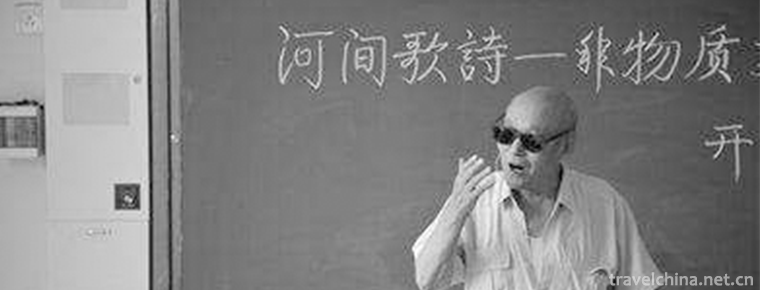
-
Daocheng Yading County Ganzi Sichuan China
Aden Scenic Spot is located in Riwa Township, Daocheng County.
Views: 563 Time 2018-10-12 -
Nansha Garden Hotel Guangzhou
Nansha Garden Hotel, a brand-new landmark building in Dawan District and New Nansha, was commissioned on June 20, 2018. The brand of Garden Hotel added a unique creative design hotel..
Views: 253 Time 2018-12-16 -
Xishuangbanna Tropical Flower Garden
Xishuangbanna Tropical Flower Garden is located in Yunnan Institute of Tropical Crop Sciences, Jinghong City, Xishuangbanna Prefecture, Yunnan Province. It covers an area of 80 hectares and is one of .
Views: 148 Time 2019-02-25 -
Chongdugou Scenic Area
Zhongdugou Scenic Area, located in Luanchuan County, Luoyang City, Henan Province, was given the name of emperor because Liu Xiu, Emperor Guangwu of the Eastern Han Dynasty.
Views: 201 Time 2019-03-18 -
Haha Opera
Haha Opera, also known as Liuzi Opera and Drinking Opera, is a local opera originated from the folk in Hebei Province. It is the first national intangible cultural heritage.
Views: 210 Time 2019-05-02 -
Production Techniques of National Musical Instruments
The production of national musical instruments in Suzhou is one of the local traditional handicraft techniques in Jiangsu Province. With a long history, a wide range of varieties, exquisite skills and.
Views: 445 Time 2019-06-05 -
Ningde Huo Boy Line Lion
Ningde Huo children's lion is a traditional folk culture, which controls the lion's movement and expression through silk thread. Line lion is mainly pulled by head rope, tail rope and parotid rope, so.
Views: 73 Time 2019-06-08 -
Red Army ferry scenic spot in Cangxi County
Cangxi Red Army ferry is located in Cangxi County, Sichuan Province. There is an ancient ferry by the Jialing River in Tashan Bay 3 km southeast of Cangxi city. Close to the mountain and by the water, the terrain is very dangerous, the rocks are steep, and the trees are green. Jialing River from north to south, beautiful scenery..
Views: 306 Time 2020-11-08 -
Huangze Temple
Huangze temple is the only temple for Empress Wu Zetian in China. It is located on the Bank of Jialing River in Guangyuan City, Sichuan Province. In 1961, it was listed as one of the first batch of national key cultural relics protection units by the State Council; in 2006, it was rated as a national AAAA tourist attraction..
Views: 69 Time 2020-11-08 -
Mianyang Tourism
In 2018, Mianyang City realized a total tourism revenue of 64.766 billion yuan, an increase of 21.5%. Among them, domestic tourism revenue was 64.740 billion yuan, an increase of 21.4%; foreign exchange income of tourism was 3.8889 million US dollars,.
Views: 167 Time 2020-12-14 -
Geographical environment of Guangyuan
Guangyuan City is located in the north of Sichuan Province. Its geographical coordinates are 31 ° 31 ′ n to 32 ° 56 ′ N and 104 ° 36 ′ e to 106 ° 45 ′ E. in the north, it borders Wudu County, Wen County, Ningqiang County and Nanzheng County of Shaanxi.
Views: 115 Time 2020-12-15 -
Guangyuan secondary industry
In 2018, the total industrial added value of Guangyuan was 30.018 billion yuan, an increase of 9.4% over the previous year. The contribution rate of industry to economic growth is 44.3%, which drives economic growth by 3.7 percentage points..
Views: 330 Time 2020-12-15

